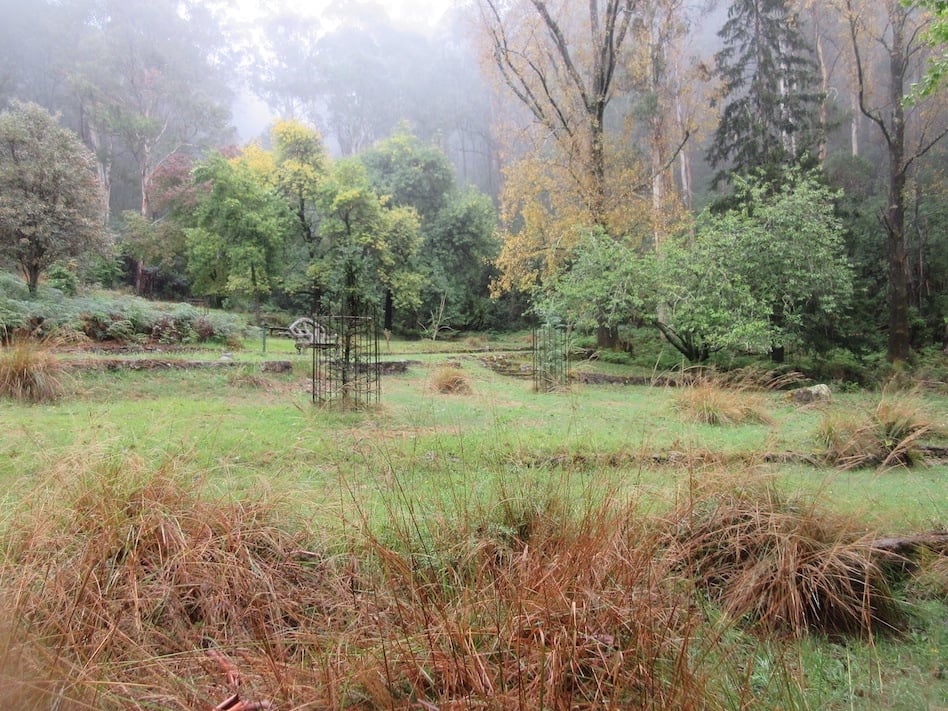In recent days it has rained, quite considerably—weather related to the flooding rains in NSW.
After visiting Clover Power station and its dam, I was surprised to read about Lower Bogong. Later named Clover Village, the 17 house township was once established in 1941 to serve the power station but was later “removed”. In commemoration, an arboretum was established in 1973, maintaining the once constructed planted trees that reminded villagers of their European homelands. Still, here stone walls and steps also remain, providing some sense of the general layout of the village, not just its planted trees.
The village was later deemed a health risk due to its geographical position— thought too distant from Bogong’s community services while also too cold, often shadowed by the spur. Its houses were put up for auction in the 1950’s.
Given nostalgia for the old country was a way of maintaining some sense of normality in the harsh, damp conditions, there is, however, something eccentric about the choice and placement of the exotic trees—from ash, oak, cedar, chestnut, sequoia, sweet gum, rhododendron, poplar, all set out within the space of not more than a hectare. I think about what notions of Country and indigeneity might have meant for people back then… Of course, it is very similar to Bogong’s gardens (both villages being established at the same time), though the difference here is the incongruence within the close backdrop of thick eucalyptus bush. Many of these trees suffered in the 2013. fires.
As a means of recording their “still lives”, I took recordings from under some of the trees’ metal identification signs while it was raining—by way of allowing large drips to sound their surfaces but not unduly affect the mics. Perhaps this was a way of connecting to the continued presentation and maintenance of the trees—acts of memory making by the people who maintain the arboretum—though many of the signs had been dislodged from the trees or were in disrepair…But here I find a melancholy that’s quietly captivating, the site no longer being cared for in the way it probably was in years previously. One thing’s for certain, at Clover Village the rain doesn’t just fall… ‘Sound [rainfall] ghosts space, Sound makes space fragile, dubious..’ (Connor, see Hagerty in diary entry1).
But I keep returning to river/creek water… to Fainter Falls with the idea of working with the hydrophones again… This time letting them sink to the lowest levels in the rapid stream just below the metal grated walkway, thereby capturing a kind of atmospheric “scouring” effect. I turn again to my musing of water as memory, as dynamic process, as ‘substantial nothingness’…Perhaps theses sounds, their inconclusive frequencies and patterns, because they are not fixed in place (the mics getting nudged around in the stream) only represent a restless shifting which has no here …’But this here remains acoustic and as such, temporal and fluid’…as such, ’sound is always bringing us into the presence of nothingness’ (See Hegarty). Or is this the presence of fallible memory, forgetfulness?
Yesterday I returned to the village and its lake to make hydrophone recordings, now that it’s quite full with three days of rain. I put them to the edge of lake just to hear the surface bobbing, and the same restless shifting..
